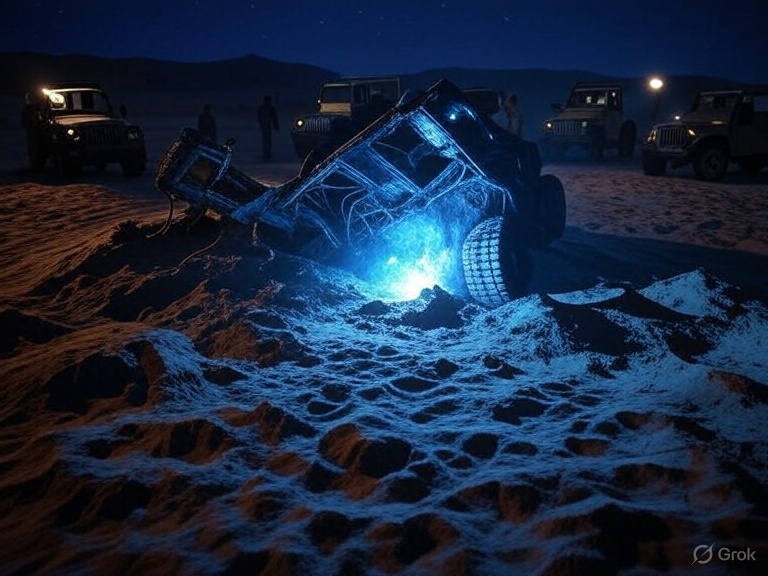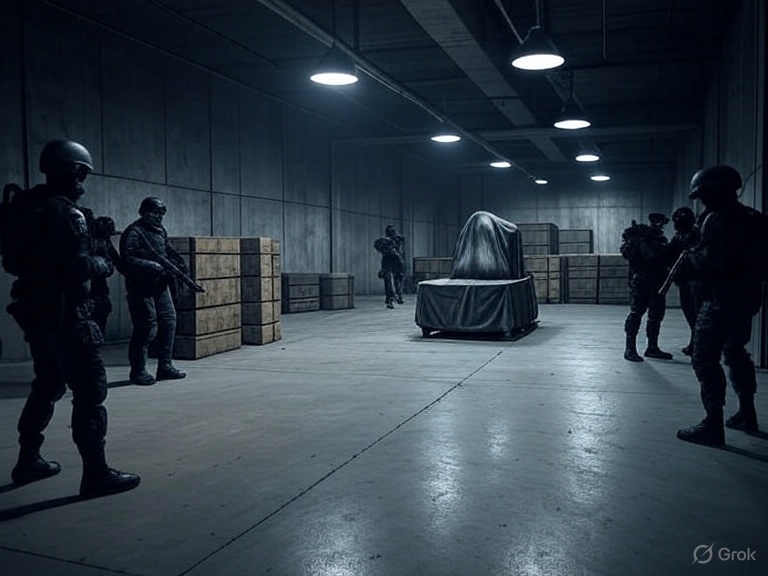Few stories in UFO history have captivated the public imagination like the Roswell Incident of 1947. What began as a report of a mysterious crash in the New Mexico desert has grown into the most famous UFO case in the world. While much has been written, debated, and sensationalized about Roswell, there are still elements of the story that remain murky. Questions about what was really found, who covered it up, and what witnesses actually saw continue to haunt researchers.
This article explores the lesser-known aspects of Roswell, cutting through myths and speculation to uncover what hasn’t been widely told.
The Official Story vs. The Unofficial Story
On July 8, 1947, the Roswell Army Air Field initially announced that they had recovered a “flying disc.” Within hours, that statement was retracted and replaced with a new explanation: the wreckage belonged to a weather balloon.
For decades, the military’s explanation was accepted by the mainstream, but alternative narratives began to spread in the late 1970s. Eyewitness accounts surfaced, claiming not only unusual debris but also alien bodies discovered at the crash site.
The official line remains unchanged—Roswell was part of a top-secret U.S. program called Project Mogul, which used balloons to monitor Soviet nuclear tests. Yet, the rapid shift in statements and classified nature of the project created an opening for conspiracy theories to flourish.
The Forgotten Witnesses
Most retellings of Roswell focus on the rancher Mac Brazel, who found the debris, and military officials who handled the recovery. But overlooked are the lesser-known witnesses:
- Nurses at the Roswell base hospital who allegedly described small humanoid beings.
- Local residents who recalled military intimidation, warning them not to talk about what they saw.
- Children of servicemen, who later came forward with stories passed down from their parents about unusual artifacts.
While skeptics dismiss these as unreliable or secondhand accounts, their consistency across decades is striking.

The Censored Files
Declassified U.S. Air Force documents have shed light on some Cold War-era programs, but researchers argue that key Roswell files remain missing or redacted. The so-called “Roswell Files” that investigators often reference aren’t a single archive but rather a patchwork of documents—many incomplete.
Some claim that the FBI’s “Majestic 12” documents, leaked in the 1980s, point to a secret government group tasked with handling UFO recoveries, including Roswell. While these documents are considered forgeries by mainstream historians, they remain central to the UFO community’s case that Roswell was covered up at the highest levels.
The Technology Question
One under-discussed angle is whether technological breakthroughs in the mid-20th century were influenced by what was recovered at Roswell.
Advocates of the “alien technology” theory point to:
- The sudden rise of microelectronics in the years following Roswell.
- Claims from scientists like Philip Corso, who alleged that materials from the crash were reverse-engineered into fiber optics, lasers, and integrated circuits.
Skeptics counter that these innovations were already in development, independent of any crash. Still, the coincidence continues to fuel speculation.
Roswell’s Impact on Pop Culture
What hasn’t been emphasized enough is how Roswell shaped the global UFO narrative. Before 1947, UFO sightings were fringe topics. After Roswell, they became central to American pop culture, influencing:
- Science fiction films of the 1950s that depicted alien invasions.
- The wave of UFO sightings in the 1960s and 70s.
- Modern TV shows like The X-Files, which leaned heavily on Roswell-inspired storylines.
In many ways, Roswell didn’t just spark conspiracy theories—it defined how the world imagines UFO encounters.
The Human Element – Fear and Secrecy
The Roswell Incident also reflects the fear-driven mindset of the early Cold War era. If something unknown and possibly extraterrestrial crashed, revealing it publicly could have sparked global panic. Conversely, if it was advanced Soviet technology, secrecy would have been vital to protect U.S. security interests.
Thus, whether Roswell was an alien crash or a classified balloon, secrecy was the natural response. What remains debated is whether the cover-up went far beyond national security into the realm of cosmic truth suppression.

What Hasn’t Been Told Yet
While much of Roswell has been dissected, there are still pieces that don’t fit neatly into the puzzle:
- Suppressed Testimonies – Some firsthand witnesses waited until deathbeds to share their accounts, suggesting fear of consequences.
- Unexplained Debris – Descriptions of memory-metal-like materials, light yet indestructible, remain unverified.
- Military Behavior – Eyewitnesses consistently recall unusual urgency and intimidation by officials, inconsistent with a simple weather balloon recovery.
These details, though often sidelined, continue to fuel the idea that something extraordinary occurred.
Conclusion: Myth, Cover-Up, or Hidden Truth?
The Roswell Incident remains unsolved, suspended between myth and reality. Skeptics argue it was nothing more than Cold War secrecy wrapped in UFO hysteria, while believers insist it marked the greatest cover-up in modern history.
What hasn’t been fully told is the human side of Roswell—the fear of witnesses, the intimidation by authorities, and the unanswered questions that official reports never addressed. Until more files are declassified or undeniable evidence surfaces, Roswell will remain a timeless mystery at the crossroads of secrecy, science, and speculation.

